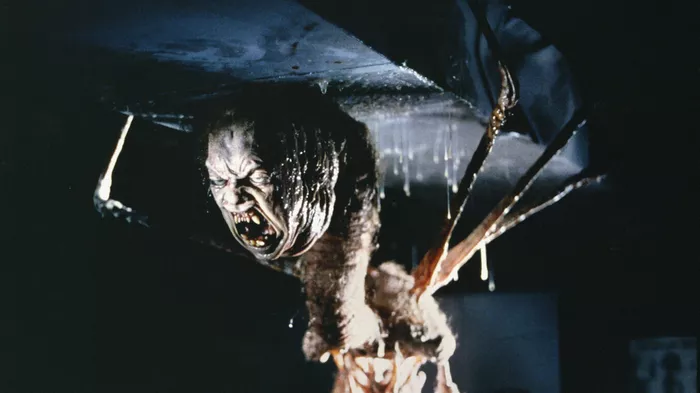John Carpenter’s 1982 classic, The Thing, is renowned for its masterful blend of suspense, horror, and psychological tension. One of the film’s enduring mysteries revolves around the elusive “eye gleam” clue, which supposedly reveals the humanity of the characters within the narrative. This theory, though initially compelling, presents a nuanced examination of the characters’ humanity, hinting at a visual marker that distinguishes between the real human survivors and the terrifying alien imitations. As audiences grapple with the intricacies of this tantalizing clue, an exploration of its origins, usage, and limitations is crucial in understanding its significance within the context of the film’s intricate narrative.
I. Origins and Usage: The Eye Gleam Clue’s Role in The Thing
The concept of the “eye gleam” was introduced in a pivotal scene within The Thing, wherein the characters undergo a blood test to identify the alien imitations among them. This visually striking element serves as a critical plot device, adding a layer of tension and uncertainty as the characters grapple with the paranoia and fear of being infected. The stark contrast between the subtle light reflected in the eyes of the human survivors and the absence of this glimmer in the eyes of the alien imitations creates an eerie and palpable sense of unease, effectively reinforcing the film’s overarching themes of identity, trust, and survival in the face of an unknowable and shape-shifting menace.
II. Limitations and Inconsistencies: Examining the Eye Gleam Beyond the Blood Test
While the eye gleam theory initially appears to hold water within the context of the blood test scene, its applicability outside of this specific context is called into question. Viewers are introduced to characters who exhibit the characteristic eye gleam but are ultimately revealed to be infected, thus undermining the initial assumptions drawn from this visual cue. This contradiction serves as a testament to the complexity of The Thing’s narrative and its deliberate subversion of audience expectations. As viewers grapple with the shifting dynamics of trust and suspicion, Carpenter deliberately challenges the notion of a definitive visual marker, prompting audiences to question the reliability of the eye gleam as an infallible indicator of human identity.
III. Carpenter’s Dismissal: The Director’s Take on the Eye Gleam Theory
Despite the initial intrigue surrounding the eye gleam theory, John Carpenter himself has publicly dismissed the notion of a definitive visual cue to distinguish between the real human survivors and the alien imitations in the final scene of The Thing. Carpenter’s statement highlights the deliberate ambiguity that permeates the film’s narrative, emphasizing the director’s intention to leave the ultimate fates of the characters open to interpretation. By eschewing a clear-cut resolution and embracing the uncertainty that defines The Thing’s thematic underpinnings, Carpenter invites audiences to grapple with the psychological complexities of identity, trust, and the innate human capacity for deception and self-preservation in the face of an insidious and shape-shifting threat.
IV. The Eye Gleam’s Legacy: A Lasting Enigma in The Thing’s Narrative
As The Thing continues to captivate audiences and scholars alike, the enigmatic nature of the eye gleam theory endures as a testament to the film’s enduring legacy and its status as a seminal work within the realms of science fiction and horror. The ongoing debates and discussions surrounding the reliability and limitations of the eye gleam as a definitive marker of human identity serve as a testament to the film’s nuanced exploration of the human psyche and its capacity for deception and self-preservation. As viewers revisit The Thing, they are invited to grapple with the complexities of trust, paranoia, and survival, ultimately confronting the unsettling realization that the true “monsters” may not be the extraterrestrial imitations but the innate human impulses that surface when faced with an existential threat beyond comprehension.


